Archive | Infrastructure RSS feed for this section
Economics, Environment, Information and Communications Technology, Infrastructure, Social development and protection, Urban development
 Economics, Infrastructure, Social development and protection, Transport
Economics, Infrastructure, Social development and protection, Transport
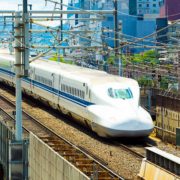 Agriculture and natural resources, Infrastructure, Regional cooperation and integration
Agriculture and natural resources, Infrastructure, Regional cooperation and integration
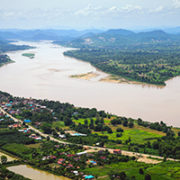 Finance sector development, Industry and trade, Infrastructure, Regional cooperation and integration
Finance sector development, Industry and trade, Infrastructure, Regional cooperation and integration
 Industry and trade, Infrastructure, Regional cooperation and integration
Industry and trade, Infrastructure, Regional cooperation and integration
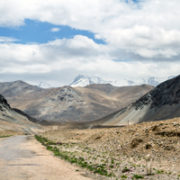 Economics, Environment, Infrastructure, Population, Poverty, Social development and protection, Urban development
Economics, Environment, Infrastructure, Population, Poverty, Social development and protection, Urban development
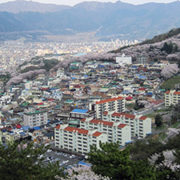 Economics, Environment, Finance sector development, Governance and public sector management, Industry and trade, Infrastructure, Regional cooperation and integration, Urban development
Economics, Environment, Finance sector development, Governance and public sector management, Industry and trade, Infrastructure, Regional cooperation and integration, Urban development
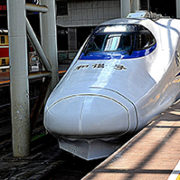 Energy, Environment, Governance and public sector management, Infrastructure
Energy, Environment, Governance and public sector management, Infrastructure
 Economics, Education, Finance sector development, Governance and public sector management, Infrastructure
Economics, Education, Finance sector development, Governance and public sector management, Infrastructure
 Economics, Energy, Environment, Governance and public sector management, Infrastructure
Economics, Energy, Environment, Governance and public sector management, Infrastructure
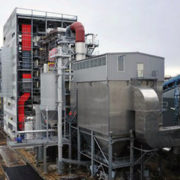
Levelling up innovation in Asia

Innovation is playing a vital role in the economic, social, and environmental progress of Asia and the Pacific and has been an important factor in the region's rapid and successful transformation. However, many countries in the region lag behind, innovating at a fraction of the pace as countries in similar or even lower income groups.
Balancing the Spillover Effects of High-Speed Rail Infrastructure Investment in Asia

Comprehensive infrastructure projects have proven to be efficient in reducing poverty, community burdens, and production costs and raising competitiveness within and between regions. However, investment in specific forms of infrastructure can help balance the trade-offs between huge infrastructure demand and scarce financial resources, especially in developing countries.
Perspectives on Mekong-Japan cooperation for inclusive growth and mutual benefits

Rapid economic development in recent decades has transformed Southeast Asia and prepared the region to join international production networks, which allow greater exports of manufacturing products, textiles, and other primary high-quality valued added products to the international market. This economic development has been achieved thanks to investments from around the globe into the region as a result of a favorable labor force, connectivity and innovation growth, and regional political stability as driven by the Association of Southeast Asian Nations (ASEAN) vision.
Next generation of quality development and investment in the new Pacific trade pact

Earlier this month, the Pacific trade pact was reborn in Santiago as the 11-nation Comprehensive and Progressive Agreement for Trans-Pacific Partnership. While the headlines have been dominated by the absence of the United States and the level of trade gains each nation hopes to enjoy, let’s focus here on three less-remarked-upon sections of this revised treaty among Australia, Brunei Darussalam, Canada, Chile, Japan, Malaysia, Mexico, New Zealand, Peru, Singapore, and Viet Nam (the TPP11).
One Belt One Road and the Risks Behind the Win-Win Situation

The New Silk Road Initiative was originally unveiled by Chinese President Xi Jinping in 2013 and became known as the Belt and Road Initiative (BRI). From the beginning, the initiative was presented as a reestablishment of the trade routes that were successful many centuries ago. The initiative was also a call for partner countries to accelerate transport infrastructure improvements and connectivity to boost trade. Through active diplomacy and intense public relations, 65 countries felt they had to join the initiative with the prospect of Chinese financial assistance.
Housing policy in the Republic of Korea

This article evaluates housing policy in the Republic of Korea over the past 5 decades or so, and describes new challenges arising from the changing environment. The most pressing housing problem in the early phase of development of the Republic of Korea was an absolute shortage of housing. The country addressed this problem with the pragmatic approach of engaging the market using government intervention as leverage.
The PRC’s international capacity cooperation exports both industrial capacity and financial risk

International capacity cooperation (国际产能合作guoji channeng hezuo) was a 2014 addition to the “Go Global” policy suite that the People’s Republic of China’s (PRC) central bureaucracy expanded throughout 2016. It is the result of seeking a way forward from “new normal” low industrial growth rates and is a novel solution to the industrial capacity utilization problems the PRC has suffered since the 2008–2009 spending stimulus flooded into traditional industries. Steel, cement, aluminum, paper, glass, and everything from pork production to robots are in 2017 mired in cyclical overcapacity.
Propelling ASEAN towards clean coal technology

Coal, the most abundant and reliable energy resource, will continue to be the dominant energy source in power generation to meet the fast-growing electricity demand in the emerging economies of the Association of Southeast Asian Nations (ASEAN). The share of coal use in power generation was 32% in 2015, and this is projected to increase to 42% by 2040.
Kick-start private infrastructure with future tax-sharing bonds

Everybody from President Trump to the Global Infrastructure Forum is trying to think of innovative ways to attract long-term private and institutional investors to pay for the huge and largely unmet demand for new highways, railways, and dams. Promising ideas, including guarantees or gap funding, the concessional blending of finance, and bankability enhancements, have been tried but are not enough to convince overseas pension schemes or high net worth individuals to invest their idling funds in worthwhile projects, especially in emerging economies with untried issuers (Regan, 2017).
Electrifying emerging ASEAN through off-grid distributed renewable energy systems

Some 134 million people in the Association of Southeast Asian Nations (ASEAN) region do not have access to electricity (IEA and ERIA, 2013). At the end of 2015, the ASEAN Community declared that the lack of power and energy access could threaten the region’s economic growth and its economic transition.


Search
Subscribe / Connect to Asia Pathways
Subjects
- Agriculture and natural resources
- Blog
- Capacity development
- Climate change
- Economics
- Education
- Energy
- Environment
- Finance sector development
- Gender
- Governance and public sector management
- Health
- Industry and trade
- Information and Communications Technology
- Infrastructure
- Miscellaneous
- Population
- Poverty
- Private sector development
- Regional cooperation and integration
- Sanitation
- Social development and protection
- Transport
- Uncategorized
- Urban development
- Video Blog
- Water
Recent Posts
- Unraveling the Health Risks of Climate Change
- Linking Farmers to Markets Through Agricultural Cooperatives and E-Commerce in Asia
- How Can Governments Support Electricity Distribution to Achieve Net Zero in Asia?
- Promoting Corporate Climate Action Through Greenhouse Gas Accounting
- Evaluating G7 Commitments on Climate Change, Health, Well-Being, and Agriculture




Recent Comments